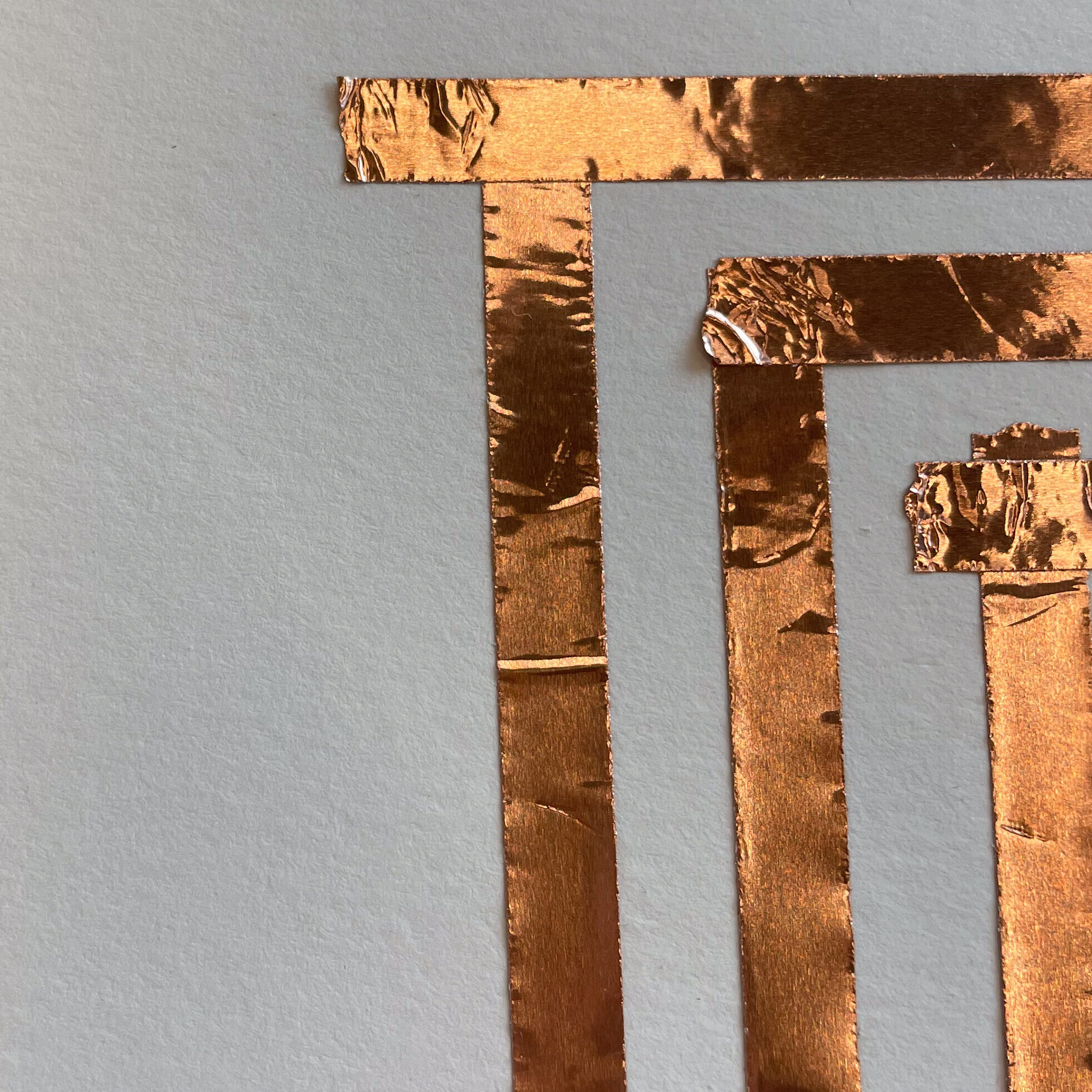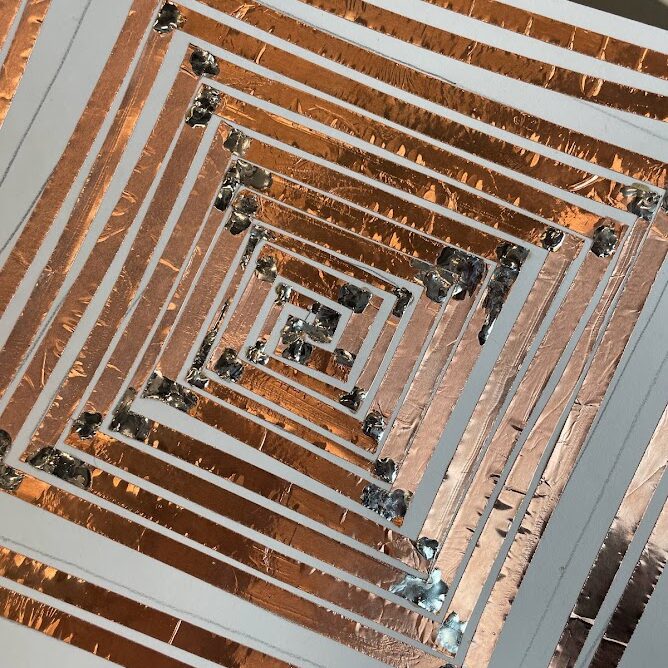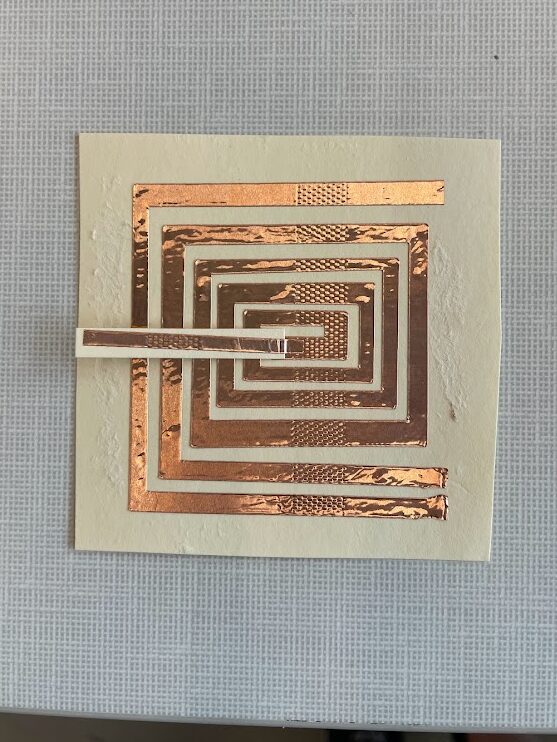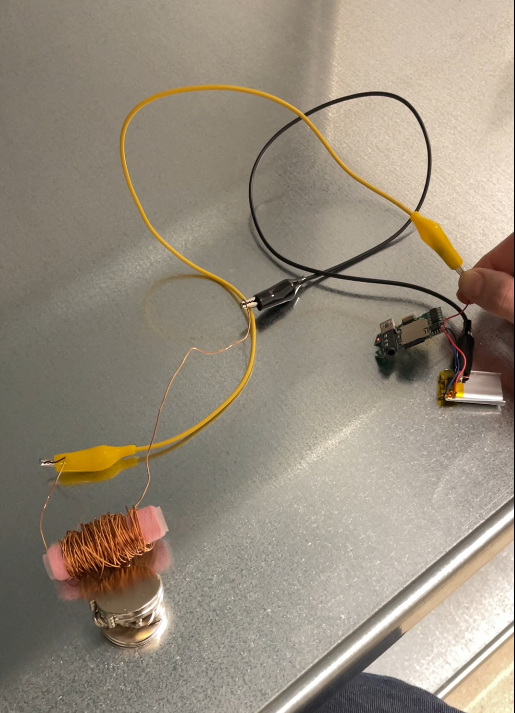By Hannah Tardie
Background:
Making handmade, “lofi” electronics from affordable materials is a wonderful way to introduce yourself to electronics if you are a beginner. It can be lower stakes and feel more approachable than working with complex circuit boards, and the results can be even more rewarding. This post will outline a few methods for making speakers using copper tape.
Materials Needed:
- Copper tape, either a sheet or a roll
- Neodymium magnets
- Paper
- An mp3 player, synth, or other electronic sound source
- Soldering iron
Method:
Speakers generate sound by adding electricity to a magnetized coil that makes it vibrate. This creates an electromagnetic field: the vibrating coil pushes air in a way that is audible to the human ear, generating sound (Moebs, Ling, Sanny). Neodymium magnets work the best for electronics because of their strength, and almost any sound source can be used as long as it can produce a strong enough signal to be heard on a lofi speaker.
There are two main steps to creating the speaker: first creating the coil, and second putting the coil together with the magnets and a sound source. The paper will act as a substrate to hold the coil in place. Printer paper and cardstock work well. Further iterations of the project could experiment with how the flexibility or rigidity of the paper changes the sound quality. I spiraled the copper tape around the paper to create a coil. Because of the design of the tape, it is difficult to use a single strand for the whole spiral, I used single pieces of tape for each line.

Because each line is a different piece of tape, the spiral circuit is not continuous at each corner because the tape is not electrically connected. Soldering each joint will create electrical continuity and resolve this issue. Because one cord will connect to the end of the spiral, and the other to the very center, I made a flap attached to the center to make it easier to attach a cord.


After testing out multiple kinds of flat speakers with different fabrication methods like laser cutting and 3D printing, I found the best results with vinyl cutting a sheet of copper tape into a spiral (Perner-Wilson). This method is more complicated up front but doesn’t require any soldering.

The sound source needs to be separated into two signals (power and ground) to be applied to any hobby speakers, including the paper speaker (Collins). It’s possible to separate the signals on an audio cable with alligator clips: one clip for ground can be attached to the ring closer to the base, and the clip for power can be attached to the tip and ring closer to the tip. I attached one clip to the tip (left audio) and ring for right audio because the speaker is mono or one channel (Campbell). Once the alligator clips are attached to the sound source, I plugged one clip into the end of the spiral and one at the center, which is where the flap comes in handy.
The speaker only really needs a magnet on the side with the coils, but I placed another underneath to hold the magnet in place. The sound comes out very quiet, and depending on the design it might only be heard when held close to the ear.
Further Applications:
This project can be done in different materials than copper tape. For example, conductive thread, conductive paint or ink, or a conductive metal coil could all work. For more methods on making speakers or other electronics from scratch, explore Hannah Perner-Wilson’s library of projects and methods called a Kit of No Parts.

References:
William Moebs, Samuel J. Ling, Jeff Sanny, University Physics Volume 1, https://openstax.org/books/university-physics-volume-1/pages/1-introduction
Hannah Perner-Wilson, Kit of No Parts http://konp.plusea.at/?p=265
Nicholas Collins, Handmade Electronic Music https://routledgetextbooks.com/textbooks/9780367210106/
Scott Campbell, How to Hack a Headphone Jack https://www.circuitbasics.com/how-to-hack-a-headphone-jack/
